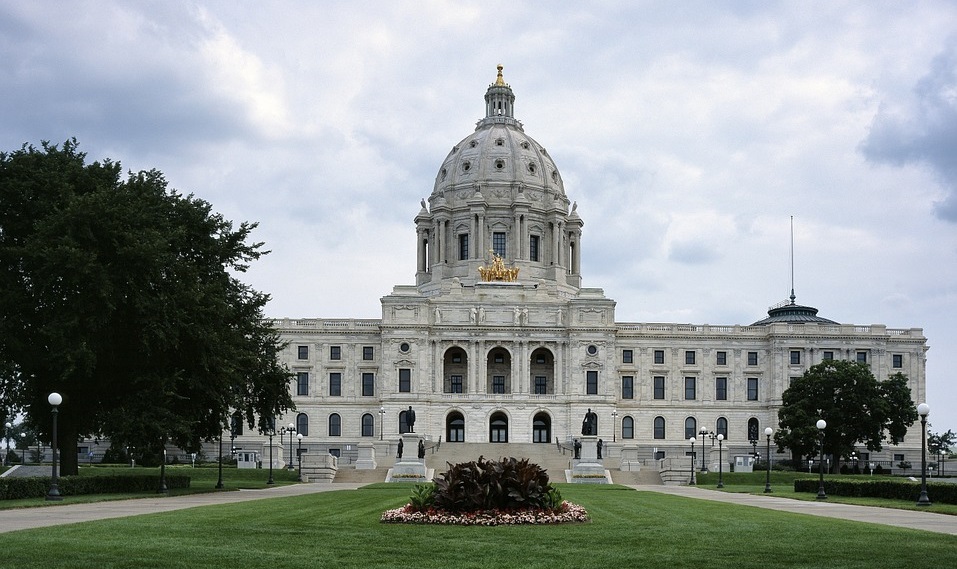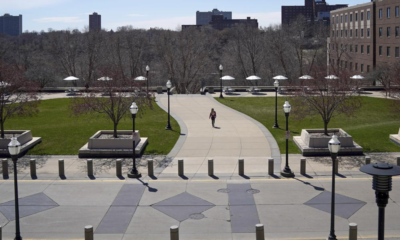Minnesota
How population trends will alter the Minnesota Legislature

MINNEAPOLIS (AP) — MinnPost recently examined how unequal population growth in Minnesota’s eight congressional districts is going to have a big effect when new district lines are drawn after the 2020 Census — especially if Minnesota loses a seat in the U.S. House, as many expect will happen.
Redistricting isn’t just for congressional districts, though: Minnesota’s 67 State Senate and 134 House Districts will need to be redrawn in the wake of the 2020 Census, too. And while we’re not at any risk of losing any seats in the Legislature — those numbers are set by law — differing rates of population growth in the current districts means the 2022 election map could look different from today’s.
Here’s a look at the latest data on population shifts in Minnesota’s legislative districts and what that might mean for redistricting and Minnesota’s future political makeup.
——
The nonprofit news outlet MinnPost provided this article to The Associated Press through a collaboration with Institute for Nonprofit News.
——
In 2012, the first year the current legislative maps were in use, State Senate districts were within about 1,130 people of each other, population-wise. They averaged about 79,160 people, according to data from the Minnesota State Demographic Center.
By 2016, the most recent year of estimates we have available, the gap between the biggest district and the smallest had grown to nearly 10,800 people. The average district had 82,517 people in it. By 2021, those numbers will have diverged from when the lines were drawn even more.
Unlike the last round of redistricting, in 2011, when the Twin Cities’ exurbs bulked up, this time around, it’s the cities that are putting on weight.
The top population gainer was Senate District 47, a suburban district to the southwest of Minneapolis that includes the cities of Waconia and Chaska. The next top three gainers are all Minneapolis districts: SD 59, SD 62 and SD 60.
No metro senate district lost population between 2012 and 2016; the same can’t be said of Greater Minnesota districts, which saw some of the biggest losses. Senate District 23, in the southern part of the state covering Watonwan, Martin and parts of Faribault and Jackson counties, lost more than 2,500 people. Other big losers included SD 16, SD 17 and SD 22 in southwestern Minnesota.
“If you look at the fastest-growing cities, that’s where we’re going to see the most change in legislative boundaries,” Brower said. Geographically, those districts will likely shrink, to accommodate more dense population, while districts that are losing population will become geographically larger.
“Rochester is up there, Blaine, Woodbury, the growth in those areas are closer to 9,000 or 8,000 . so it’s a different kind of magnitude, but again that’s where we’ll be seeing those district lines shift,” Brower said.
More than just moving lines around, these population shifts could have big implications for control of the Minnesota House and Senate in the next decade.
With the Twin Cities metro trending more blue in recent elections and gaining people, the changes could spell more wins for the DFL.
“If the growth is in the urban areas, theoretically that’s going to help the DFL, and the DFL is probably excited if that’s where the population growth is because they might pick up a few seats,” said Jim Cottrill, a political science professor at St. Cloud State University who specializes in redistricting.
Now, all of this math rests on one big assumption: that the lines will be drawn in more or less the same way they have been in the past.
In recent years, it’s the courts that have drawn redistricting lines in Minnesota because of Legislatures and governors who couldn’t agree on plans. Court-drawn redistricting plans, research has found, have tended to create more competitive districts.
It won’t necessarily be the courts that draw the lines in 2021. The redistricting process rides on who wins the election for governor in November, as well as who’s elected to the House and Senate in 2020. If they can’t agree or if a legislative plan faces legal challenges, it could get kicked to the courts again.
But it’s technically the legislature’s job. And while the rules are pretty strict for drawing lines at the Congressional level, thanks to Supreme Court rulings, Cottrill said, “one of the things that’s interesting about the state level is that there’s not as clear guidance from the courts about how much of a difference there can be in the districts.”
Some states have districts that vary in population by as much as 10 percent, Cottrill said, and it follows that if population changes aren’t huge and the party in power doesn’t want to change lines much, they might not have to.
Unlike Congressional districts, which encompass a pretty big share of the state’s population, legislative districts are small, so little changes in the way lines are drawn can matter a lot.
“My district in St. Cloud, the first year I moved here in 2014, Zach Dorholt (the DFL House candidate) lost by 69 votes,” Cottrill said. “Two of my classes could have swung that election the other way — they’re so close that really just razor-thin differences in the way they’re drawn can make a huge difference.”







